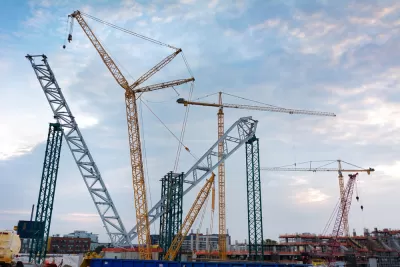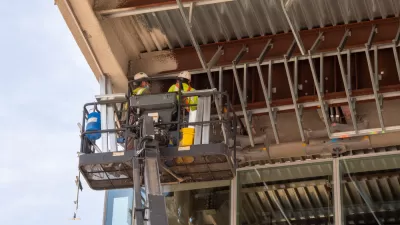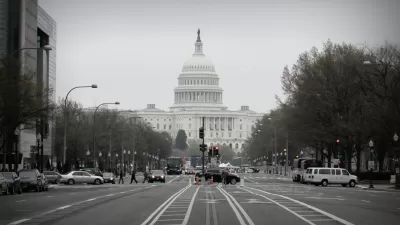A critical economic bellwether is showing tentative signs of recovery.

The American Institute of Architects' latest Architecture Billings Index shows a slight improvement in business conditions, although work is still slowing. The report is considered a bellwether for built environment professions, including planning, as well as the larger economy.
An article published by Building Enclosure provides insight into the report's findings, which updates data through the first month of 2021: "AIA’s Architecture Billings Index (ABI) score for January was 44.9* compared to 42.3 in December (any score below 50 indicates a decline in firm billings). Last month’s score indicates overall revenue at U.S architecture firms continued to decline from December to January, however, the pace of decline slowed."
The AIA's Architecture Billings Index breaks down the financial data by region. By geography, the South is performing best, relative to other regions, with an index of 47.4. The worst performing, the Northeast, had an index of 41.9 in January 2021.
Checking in with the ABI throughout the past year, Planetizen noted the state of the ABI as important junctures of the pandemic economic downturn, including a strong sector just previous to the shutdowns and economic downturn in Spring 2020, the eventual collapse of business as the pandemic lingered, and the first signs of a potential recovery in the fall of 2020.
FULL STORY: Architectural Billings Continue to Contract in 2021

Trump Administration Could Effectively End Housing Voucher Program
Federal officials are eyeing major cuts to the Section 8 program that helps millions of low-income households pay rent.

Planetizen Federal Action Tracker
A weekly monitor of how Trump’s orders and actions are impacting planners and planning in America.

Ken Jennings Launches Transit Web Series
The Jeopardy champ wants you to ride public transit.

Crime Continues to Drop on Philly, San Francisco Transit Systems
SEPTA and BART both saw significant declines in violent crime in the first quarter of 2025.

How South LA Green Spaces Power Community Health and Hope
Green spaces like South L.A. Wetlands Park are helping South Los Angeles residents promote healthy lifestyles, build community, and advocate for improvements that reflect local needs in historically underserved neighborhoods.

Sacramento Plans ‘Quick-Build’ Road Safety Projects
The city wants to accelerate small-scale safety improvements that use low-cost equipment to make an impact at dangerous intersections.
Urban Design for Planners 1: Software Tools
This six-course series explores essential urban design concepts using open source software and equips planners with the tools they need to participate fully in the urban design process.
Planning for Universal Design
Learn the tools for implementing Universal Design in planning regulations.
Heyer Gruel & Associates PA
Ada County Highway District
Institute for Housing and Urban Development Studies (IHS)
City of Grandview
Harvard GSD Executive Education
Toledo-Lucas County Plan Commissions
Salt Lake City
NYU Wagner Graduate School of Public Service





























